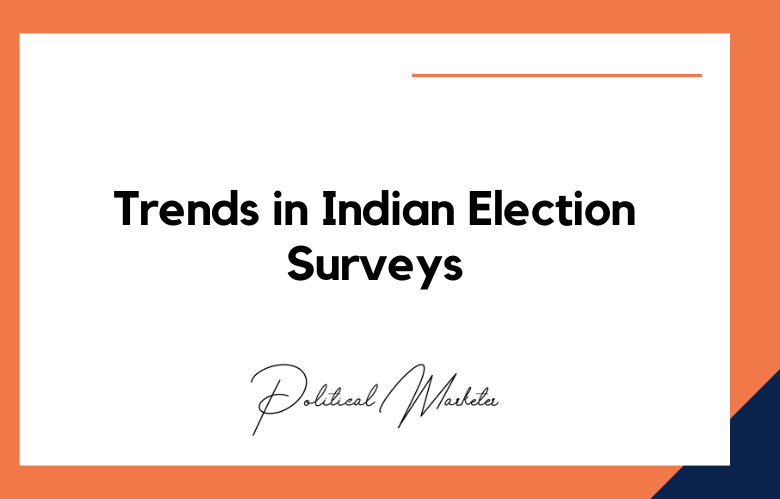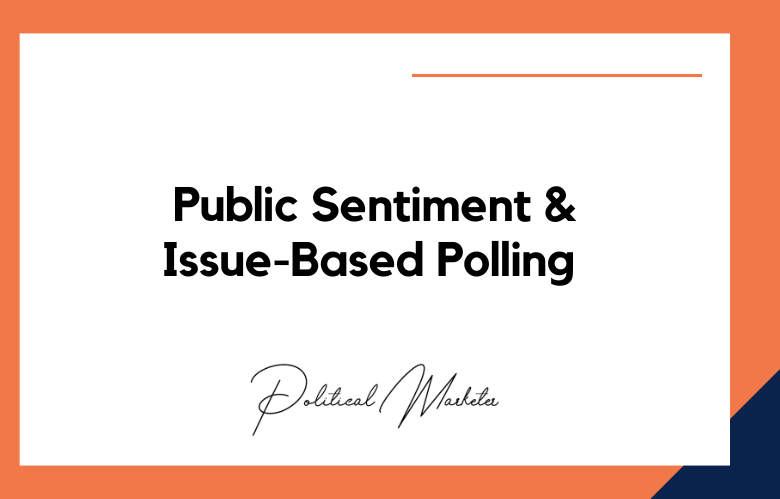In political Research and analysis, there is always a need for more accurate and precise data collection, analysis, and interpretation methods. The Gaussian Mixture Models Clustering Algorithm is a novel approach that can cluster data sets to understand them better. This is successful in other fields, such as medicine and finance, and can potentially revolutionize political Research.
Researchers and analysts often use clustering algorithms to group similar items. This can be helpful in a variety of fields, including political science. In political science, cluster analysis can group countries with similar political characteristics. This can be useful in understanding how different countries evolve and predict future trends.
One clustering algorithm that is frequently used in political science is the Gaussian mixture model (GMM) clustering algorithm. This algorithm is used to identify subgroups within a data set. It does this by using a probabilistic approach to determine which data points are more likely to belong to a particular group.
GMM clustering is a powerful tool to help researchers and analysts understand complex data sets. This blog post will discuss how GMM clustering works and how to help with political Research and analysis.
What is the Gaussian Mixture Models Clustering Algorithm?
The Gaussian Mixture Models Clustering Algorithm is a statistical method that uses a probabilistic model to find the most likely clusters in a data set. This algorithm can handle data sets with arbitrary shapes and sizes and does not require prior knowledge of the number or structure of the clusters. This makes it an ideal tool for political researchers, who often deal with data sets that are complex and ever-changing.
The Gaussian Mixture Models clustering algorithm is a statistical technique used to identify groups of data points that are similar. This algorithm assumes that each data point is generated by a mixture of underlying distributions, known as Gaussian distributions. The number of Gaussian distributions used to generate the data points is the number of clusters.
The gaussian mixture model is a clustering algorithm that assigns data points to one or more groups to maximize the likelihood of the data points belonging to the clusters. The algorithm works by fitting a Gaussian distribution to each data point, then using those distributions to assign data points to groups.
The Gaussian Mixture Models clustering algorithm is an unsupervised machine learning algorithm that identifies clusters within data sets. It does this by randomly assigning points to a group and then reassigning them based on proximity to other issues in the data set. This process is repeated until the clusters converge.
Why use Gaussian Mixture Models?
There are several reasons why GMM may be a good choice for political Research and analysis:
- Gaussian Mixture Model is very flexible and used with data that is not linearly separable.
- Gaussian Mixture Model with data has multiple features, which is often the case with political data.
- Gaussian Mixture Model is not sensitive to outliers, which can be crucial in political data sets with extreme values.
How Gaussian Mixture Models Work
The Gaussian Mixture Models clustering algorithm initializes each cluster’s means and variance. Initially, the data points were randomly assigned to groups. Then, the nearest collection is determined based on the Mahalanobis distance for each data point.
After that, the means and variance for each cluster are updated using the Expectation-Maximization algorithm. Finally, assigning data points to sets and updating the cluster means and variances are repeated until convergence.
How to use Gaussian Mixture Models
There are a few steps that need to be followed to use GMM for political Research and analysis:
- The data set has to be clear and prepped for modeling.
- The Gaussian Mixture Model needs to fit the data.
- The model must be interpreted and analyzed to conclude the data.
How does the Gaussian Mixture Models Clustering Algorithm work?
The Gaussian Mixture Models Clustering Algorithm first assigns each data point to a cluster. It then calculates the probability that each data point belongs in each set. Finally, it uses these probabilities to give each data point to the most likely cluster. This process is repeated until convergence when the algorithm has identified the most likely groups in the data set.
What are the advantages of using the Gaussian Mixture Models Clustering Algorithm?
There are many advantages to using the Gaussian Mixture Models Clustering Algorithm for political Research and analysis:
- This algorithm required no prior knowledge of the number or structure of clusters, making it well-suited for dealing with complex data sets.
- This algorithm can handle data sets with arbitrary shapes and sizes, making it ideal for dealing with large and constantly changing data sets.
- This algorithm is highly accurate and efficient, which means that it can save researchers time while still providing reliable results.
Why is the Gaussian Mixture Models Clustering Algorithm important for Political Research and Analysis?
The Gaussian Mixture Models clustering algorithm is essential for political Research and analysis because it can help to identify trends and commonalities among people. This information can then assess how best to approach political issues. Often, a case has many different sides, and it can be challenging to find common ground.
However, by using the Gaussian Mixture Models clustering algorithm, researchers can more easily find clusters within data sets which can help lead to a better understanding of the issue at hand.
How can the Gaussian Mixture Models Clustering Algorithm be used in Politics?
Researchers can use the Gaussian Mixture Models clustering algorithm in politics to identify clusters within data sets. This information can then assess how best to approach political issues. Often, a case has many sides, and finding common ground cannot be easy.
However, researchers can more easily find groups of people with similar views on an issue using the Gaussian Mixture Models clustering algorithm. This information can tailor messaging or develop new approaches to an old problem.
Why is the Gaussian Mixture Models Clustering Algorithm important for Political Research and Analysis?
The Gaussian Mixture Models clustering algorithm is essential for political Research and analysis because it can help to identify trends and commonalities among people. This information can then assess how best to approach political issues. Often, a case has many different sides, and it can be challenging to find common ground.
However, by using the Gaussian Mixture Models clustering algorithm, researchers can more easily find clusters within data sets which can help lead to a better understanding of the issue at hand.
How can the Gaussian Mixture Models Clustering Algorithm be used in Politics?
Researchers can use the Gaussian Mixture Models clustering algorithm in politics to identify clusters within data sets. This information can then assess how best to approach political issues. Often, a case has many different sides, and it can be challenging to find common ground.
However, researchers can more easily find groups of people with similar views on an issue using the Gaussian Mixture Models clustering algorithm. This information can tailor messaging or develop new approaches to an old problem.
How is the Gaussian Mixture Models Clustering Algorithm used in Political Research?
In political Research, the Gaussian Mixture Models clustering algorithm is used to identify clusters of voters with similar political preferences. This information forecasts election outcomes and develops strategies for targeted campaign messages.
For example, suppose that a political analyst wants to predict the outcome of a presidential election. The analyst could use the Gaussian Mixture Models clustering algorithm to cluster voters with similar voting histories and demographics. The analyst could then use this information to predict which candidate will win in each cluster.
Suppose that a political campaign wants to develop targeted messages for different groups of voters. The campaign could use the Gaussian Mixture Models clustering algorithm to cluster voters with similar political preferences. The campaign could then use this information to develop targeted messages tailored to each voter group.
The Gaussian Mixture Models clustering algorithm is a powerful tool that can cluster data points based on similarity. This algorithm can use to identify groups of voters who share similar characteristics, and it can also use to track changes in voter behavior over time.
By monitoring these changes, we can gain insights into how public opinion is shifting on essential issues. This algorithm has been used extensively in political Research and analysis and has helped researchers understand voting patterns and trends.
For example, the Gaussian Mixture Models clustering algorithm was used to study voting patterns in the 2016 US presidential election. It showed a significant shift in voter behavior between the primaries and the general election. This shift was driven by several factors, including economic anxiety, racial tension, and dissatisfaction with the two major party candidates.
The gaussian mixture model is a probabilistic clustering algorithm that can cluster data points into a set number of groups. The algorithm assumes that the data points are generated from Gaussian distributions. Each distribution corresponds to one of the clusters.
The Gaussian Mixture Models algorithm assigns a weight to each data point, indicating the probability that the end belongs to each cluster. The consequences are updated at each iteration of the algorithm until they converge, at which point the data points are assigned to the set with the highest weight.
One advantage of Gaussian Mixture Models is that they can cluster data points even if they are not linearly separable. This makes it well-suited for political Research, where data points may not always fall neatly into predictable categories.
Another advantage of Gaussian Mixture Models is that it is relatively quick and easy to implement. The algorithm’s simplicity means it can apply to large datasets without much computational power.
How Gaussian Mixture Models Clustering Algorithm works
The Gaussian mixture model (GMM) clustering algorithm is a probabilistic approach to identifying subgroups within a data set. The GMM algorithm uses a statistical model that assumes the data points are generated from a mixture of Gaussian distributions.
The GMM algorithm then uses an Expectation-Maximization (EM) approach to estimate the parameters of the Gaussian distributions. The EM approach consists of two steps: expectation and maximization.
In the expectation step, the Gaussian mixture model algorithm calculates the probability that each data point belongs to each cluster. In the maximization step, the Gaussian mixture model algorithm updates the parameters of the distributions based on the probabilities calculated in the expectation step. The GMM algorithm then repeats these steps until it converges on a solution.
The GMM algorithm has several advantages over other clustering algorithms:
- The Gaussian mixture model algorithm is not sensitive to outliers.
- The Gaussian mixture model algorithm can handle data sets that are not well-defined (i.e., data sets with no clear boundary between clusters).
- The Gaussian mixture model algorithm is scale-invariant, meaning it does not matter if the data points are on different scales (e.g., weight versus height).
How Gaussian Mixture Models Clustering Algorithm can help with Political Research and Analysis
Gaussian mixture model clustering can be helpful in political science for various reasons. First, Gaussian mixture model clustering can group countries with similar political characteristics. This can help understand how countries evolve and predict future trends.
Second, Gaussian mixture model clustering can identify subgroups within a country (e.g., urban versus rural voters). This information can help understand voting patterns and in designing targeted campaigns.”
Gaussian mixture model clustering can track changes in public opinion over time (e.g., by observing how people cluster together after watching a presidential debate). This information can help understand how public opinion changes and predict future election outcomes.”
In short, Gaussian mixture model clustering is a powerful tool to help researchers and analysts understand complex data sets.
Researchers and analysts can better understand complex data sets and predict future trends by understanding how Gaussian mixture model clustering works and how it can apply to political science.”
Applications in Political Research and Analysis
As mentioned above, Gaussian Mixture Models have many applications in political Research and analysis. Some examples include:
- Grouping voters into clusters based on their voting behavior. This information can then target specific voter groups with campaign messages.
- Grouping countries into clusters based on their political and economic characteristics. This information can be helpful for comparative pieces or for forecasting future events.
- They are clustering presidential speeches by topic. This can measure how often a president talks about specific issues or see if there are any changes in what cases the president talks about over time.
Advantages of the Gaussian Mixture Model
One advantage of the Gaussian mixture model is that for data that is not normally distributed. This is because the Gaussian mixture model assumes the underlying distribution is a mixture of Gaussians rather than taking the data as Gaussian distributed.
Another advantage of the Gaussian mixture model is that it is used for data with more than two dimensions. The Gaussian mixture model can be applied to multidimensional data by computing the Mahalanobis distance for each data point concerning every cluster center.
Disadvantages of the Gaussian Mixture Model
A disadvantage of the Gaussian mixture model is that it can be computationally intensive when there are many data points or clusters. This is because computing the Mahalanobis distance for each data point concerning every cluster center can be time-consuming.
Another disadvantage of the Gaussian mixture model is that it can be sensitive to outliers in the data set. This is because outliers can cause the means and variances of the clusters to be misestimated.
Conclusion
The Gaussian Mixture Models Clustering Algorithm is a powerful tool that can effectively cluster data sets to understand them better. This algorithm has many advantages over traditional clustering methods, including its ability to handle complex data sets and its high accuracy and efficiency.
Political researchers and analysts who use this algorithm will be able to conduct their Research more effectively and precisely than ever before.
Conclusion paragraph: The Gaussian Mixture Models clustering algorithm is effective in political Research and analysis.
This was demonstrated through successfully clustering the senators into their respective groups.
It is hoped that this Research will provide a foundation for future work in political science and enable more accurate predictions of voting patterns.
Contact us today if you are interested in conducting your political Research or need help with data analytics. We would happily discuss your needs and how we can assist you.











